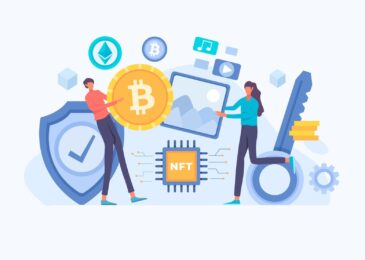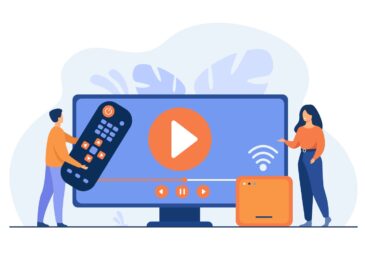7 Ways Natural Language Processing Has Made Our Life Easier
7 Ways Natural Language Processing Has Made Our Life Easier –
Natural language processing leverages the huge amount of data from the web and social media to extract the meaning of spoken and written language. NLP has come a long way and has found its way into many areas of our lives where we talk to our browsers to find stuff, ask our phone to do things, and talk to our car to call someone or change radio channels.
Talking to computers requires programming languages but the ultimate goal of NLP is to do away with these languages altogether. As computers become more capable of understanding human language, the list of applications of NLP grows, including sentiment analysis, entity recognition spell checking and much more.
Perhaps you are unaware of how many natural language processing applications you are already using in your life that make it easier. Here are just a few common ones you could be using on a daily basis.
Also Read – Why Should You Invest in Artificial Intelligence (AI) in 2020?
1. Smart Assistants –
Speech recognition entails converting spoken words into data a computer can understand. This is the NLP technology you use when you ask Echo, Google Voice, Siri or Cortana a question. Natural language generation is the tech used for outputting information as a human language and this is what allows voice assistants to reply to your questions.
Semantic search is closely linked to speech recognition and it allows you to ask a voice assistant like Siri your questions in a natural way instead of having to formulate it in an unnatural, specific way. We have become used to saying “Hey Siri” to ask a question and we expect a response with a relevant answer based on the context of what we’re asking.
We’re getting used to seeing Alexa or Siri pop up in various areas of our daily lives and having conversations with them through items like light switches, our cars, or even a thermostat.
We expect them to understand contextual cues and make certain activities, like ordering items, easier for us. Our interactions with assistants will start becoming more personal as they get to know more about us.
2. Chatbots –
In recent years, AI has been implemented widely in different industries and many companies have developed AI-powered conversational interfaces to carry out basic tasks. Chatbots are available to assist you around-the-clock when you go to a website. They can handle basic queries and pass you on to the correct person or department if they can’t answer them.
When phoning customer service, we often hear “this call may be recorded for training purposes” but we don’t think about what this really means. What happens is that calls go into a database and enable an NLP system to learn from them and improve the way customer queries are handled.
Many people still prefer to talk to a human than to a chatbot and a key characteristic in the success of using chatbots is the ability to offer a more “human-like” conversational experience. However, the advantage of talking to chatbots is that they are never moody, don’t go on vacation and offer clear, informative and unbiased information.
3. Spell and grammar checkers –
Grammar can be frustrating but finding and fixing grammatical and spelling errors is not bound to understanding the meaning of the text.
This means AI-based grammar checkers are pretty successful at detecting and correcting spelling and grammatical errors. Grammarly is one of the most popular grammar checkers and its success comes from being able to focus on a fairly narrow application of NLP.
4. Predictive text –
We use predictive text so often on our smartphones that we take it for granted. It predicts things to say based on what we type and finishes our words or suggests another relevant one.
It can be irritating when it auto corrects what we type incorrectly but it can learn from us and improve. It can even change our words to make our messages clearer. Predictive text will even customize to someone’s language quirks the longer they use it.
5. Spam Filters –
Spam filters started out by being able to uncover certain words or phrases and flag an email as spam. Since then, filtering has improved and newer applications can even help to filter emails based on categories. They can highlight the most important and relevant emails so a quick review and response is possible.
6. Language Translation –
Machine translation is the tech that underlies translation apps, such as Google Translate. It enables the translation of text from one language to another and presents grammatically correct results.
This is very helpful when you’re trying to communicate with someone in another language. When translating from another language to your language, tools recognize it based on inputted text, making it easier to translate.
7. Search Results –
Search engines use NLP to find relevant results. When you type in a query, they predict what popular searches may apply to it and look at the big picture to find out what you’re trying to say rather than just using exact search words. In other words, they try to determine your intent as a user.
Google’s recent BERT update is a deep learning algorithm related to natural language processing. Google wants to improve its search engine’s ability to understand the intent of users and the complex nuances of language to offer the best results.
Conclusion –
There are many ways in which we are already using natural language processing in our daily lives, from having conversations with chatbots to using grammar checkers, spam filters and Google Translate.
The human touch is still extremely important but managing and automating many small tasks can save time and energy, freeing us to take care of more important matters that require more complex skills, such as complex communication. As further innovations in technology take place, NLP is likely to be able to manage more complex tasks for us and provide even further value.
Author Bio –
 Edward is a freelance AI and Big Data consultant. He specializes in finding the best technical solution for companies to manage their data and produce meaningful insights.
Edward is a freelance AI and Big Data consultant. He specializes in finding the best technical solution for companies to manage their data and produce meaningful insights.
Also Read – Top 5 Technology Trends To Follow In 2020





